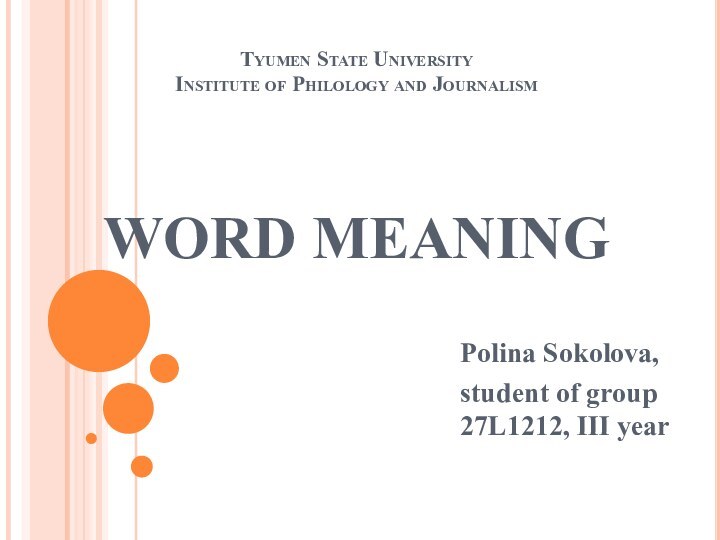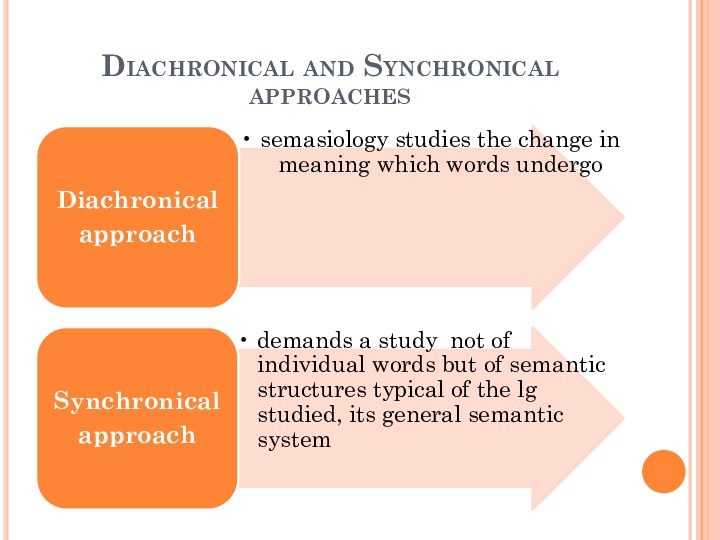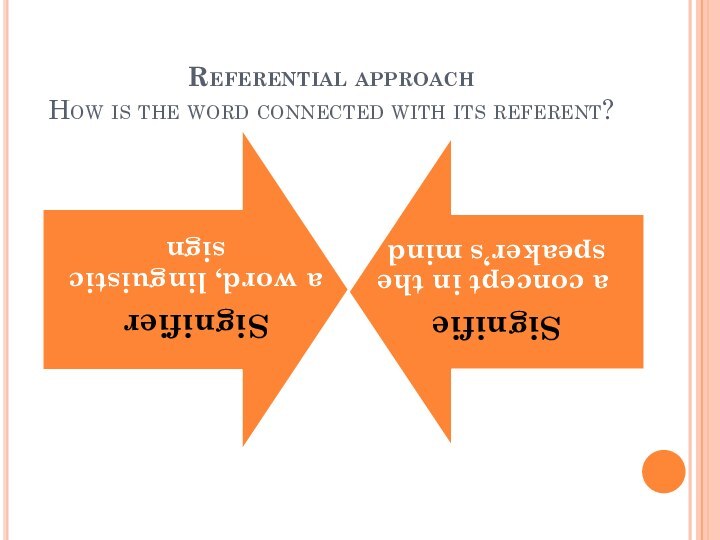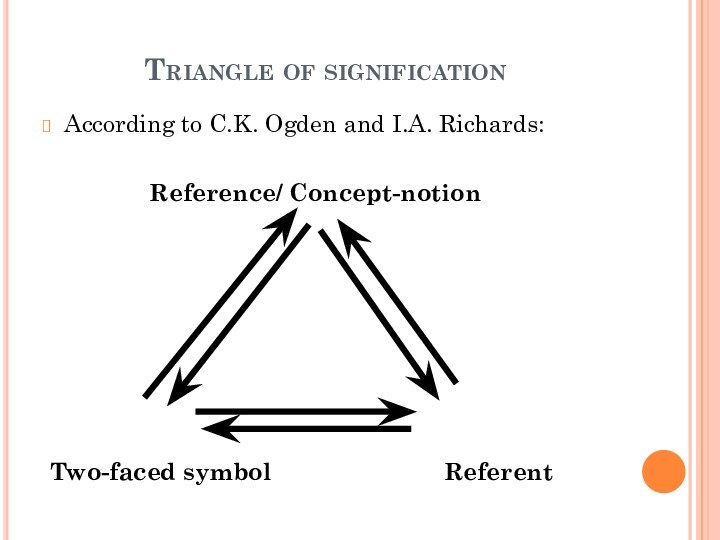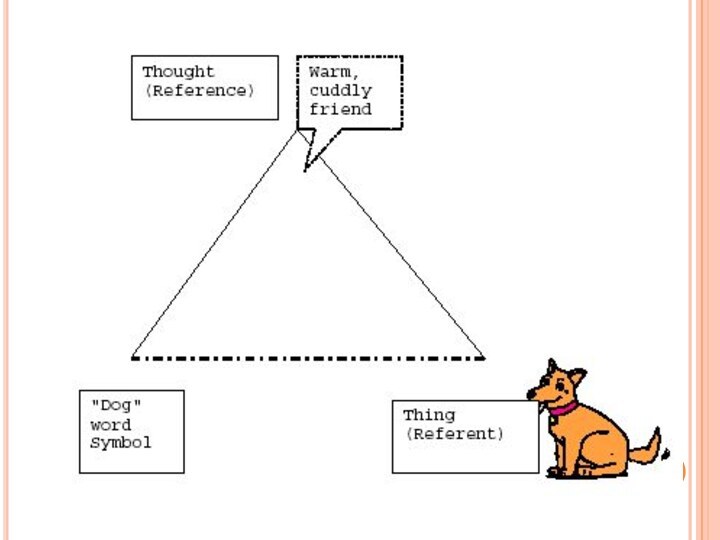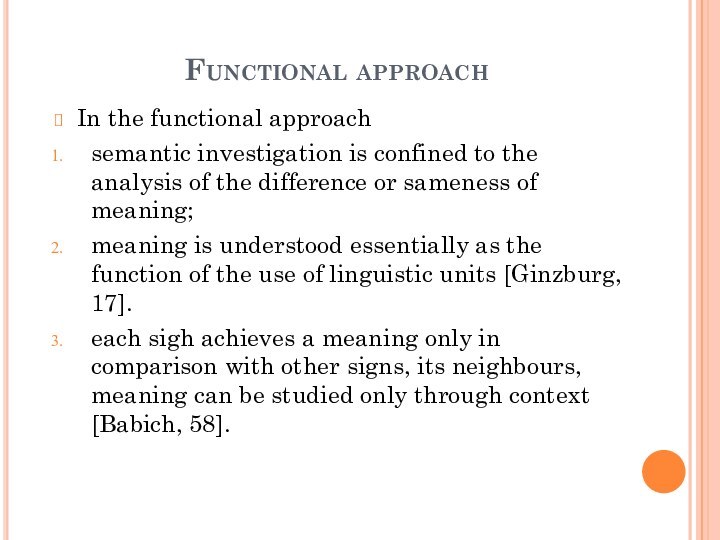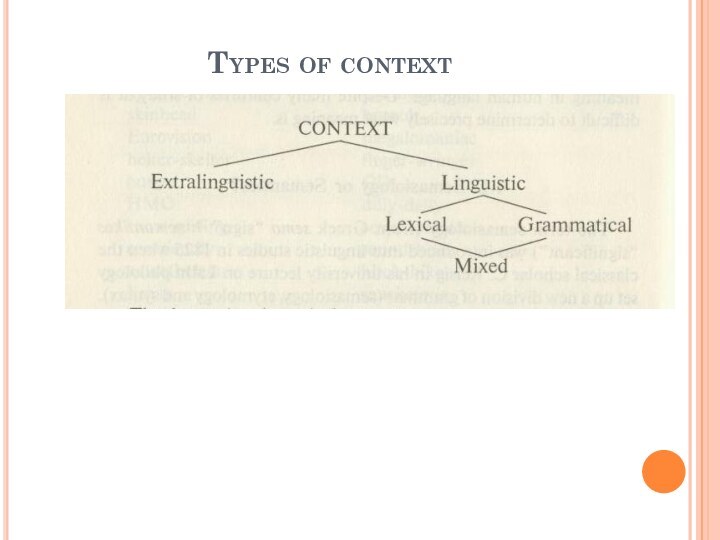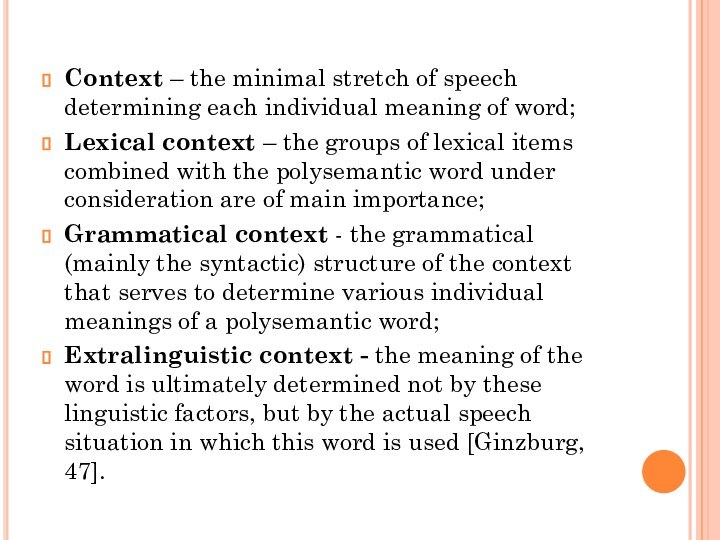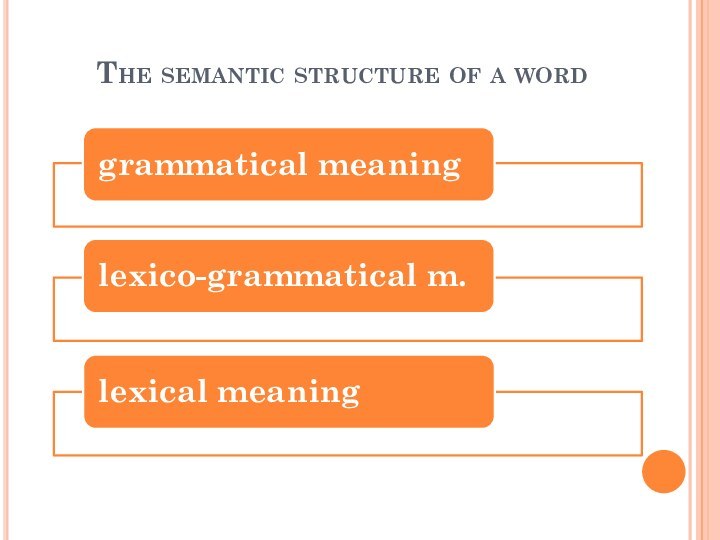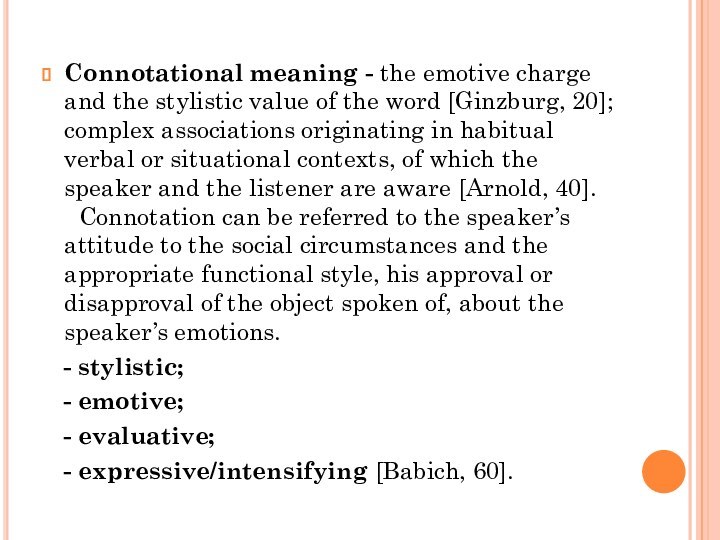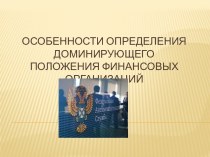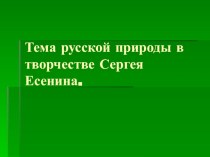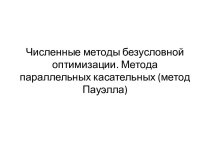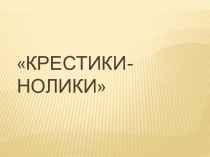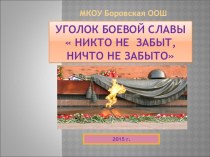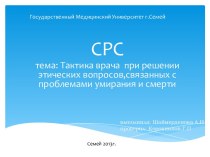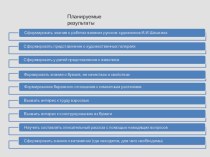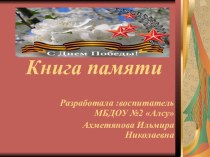Слайд 2
Semantics
1. the study of linguistic development by
classifying and examining changes in meaning and form [Webster’s
Unabriged Dictionary].
2. the branch of linguistics which specialises in the study of meaning [Antrushina, 130].
Semasiology
1. the branch of linguistics that is concerned with the meaning of words and word equivalents [Arnold, 31].
2. the branch of lexicology that is devoted to the study of meaning [Ginzburg, 13].
Слайд 3
Word meaning
a certain reflection in our mind
of objects, phenomena or relations that makes part of
a linguistic sign.
relationship between symbols (words, signs) and what they refer to (called ‘referents’) [Babich, 58].
establishment of the interindependence between words and the things or concepts they denote [Ginzburg, 13].
the relation between the object or notion named and the name itself [F. de Saussure].
Слайд 4
Diachronical and Synchronical approaches
Слайд 5
Referential and Functional approaches
Referential / Structural / Denotational
approach
seeks to formulate the essence of
meaning by establishing the interindependence between words and things pr concepts they denote;
Functional / Relative approach
studies functions of a word in speech and is less concerned with what meaning is than and how it works [Ginzburg, 13].
Слайд 6
Referential approach
How is the word connected with its
referent?
Слайд 7
Semantic triangle
According to Gotlieb Frege:
Signifie (a concept)
Sign Thing
Слайд 8
Triangle of signification
According to C.K. Ogden and I.A.
Richards:
Reference/ Concept-notion
Two-faced symbol Referent
Слайд 13
Functional approach
In the functional approach
semantic investigation is
confined to the analysis of the difference or sameness
of meaning;
meaning is understood essentially as the function of the use of linguistic units [Ginzburg, 17].
each sigh achieves a meaning only in comparison with other signs, its neighbours, meaning can be studied only through context [Babich, 58].
Слайд 15
Context – the minimal stretch of speech determining
each individual meaning of word;
Lexical context – the
groups of lexical items combined with the polysemantic word under consideration are of main importance;
Grammatical context - the grammatical (mainly the syntactic) structure of the context that serves to determine various individual meanings of a polysemantic word;
Extralinguistic context - the meaning of the word is ultimately determined not by these linguistic factors, but by the actual speech situation in which this word is used [Ginzburg, 47].
Слайд 16
The semantic structure of a word
Слайд 17
Grammatical meaning – an expression in speech of
relations between words based on contrastive features of arrangements
in which they occur (speaks, reads, writes);
Lexico-grammatical meaning – the common denominator of all the meanings of words belonging to a lexico-grammatical class of words, the feature according to which they are grouped together (generic terms);
Lexical meaning – the realization of concept or emotion by means of a definite language system (concept of relation)
[Arnold, 39-41].
Слайд 18
Denotational and Connotational components of lexical meaning
Denotational meaning
– that component of the lexical meaning which makes
communication possible [Ginzburg, 20]. It expresses the conceptual content of a word [Arnold, 40].
- significative (if the referent/denotatum is a concept)
- demonstrative (if it is an individual object) – are often met in colloquial speech.
Слайд 19
Connotational meaning - the emotive charge and the
stylistic value of the word [Ginzburg, 20]; complex associations
originating in habitual verbal or situational contexts, of which the speaker and the listener are aware [Arnold, 40]. Connotation can be referred to the speaker’s attitude to the social circumstances and the appropriate functional style, his approval or disapproval of the object spoken of, about the speaker’s emotions.
- stylistic;
- emotive;
- evaluative;
- expressive/intensifying [Babich, 60].
Слайд 20
Componential Analysis
It attempts to treat components in terms
of ‘binary’ opposites, between female and male, animate and
inanimate etc. [Babich, 62]. They are also called elements of meaning or semes which can be combined in various ways with other similar elements in the meaning of different words. [Arnold, 41].
